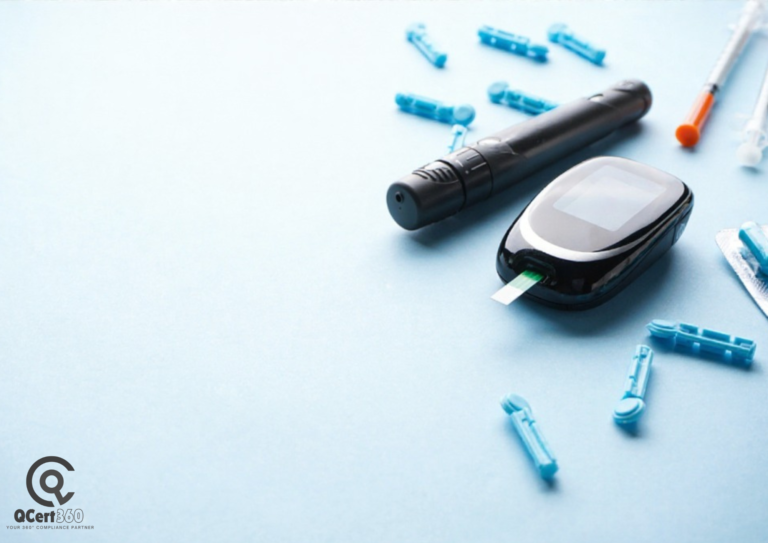
When a medical device fails, it’s not just a product defect—it’s a matter of patient safety, regulatory scrutiny, and public trust. And in the past decade, the industry has seen more than a few wake-up calls.
From massive recalls of defibrillators and insulin pumps to controversial ventilator malfunctions and hip implants, medical device companies have learned—sometimes painfully—that quality can’t be an afterthought. At the centre of these lessons is ISO 13485, the international standard for medical device quality management systems (QMS).
But here’s the real story: ISO 13485 isn’t just about passing audits. It’s about building systems that help companies spot problems before they become headlines—and fix them in a way that protects patients, professionals, and the brand.
Let’s unpack what some major recalls taught the industry about the real value of ISO 13485, and why it’s more relevant now than ever.
The Reality of a Recall: More Than Just a Product Failure
When Medtronic recalled over 600,000 implantable defibrillators, it wasn’t just about a faulty battery. It exposed cracks in the company’s internal design validation and supplier oversight processes.
When Philips Respironics recalled millions of CPAP and BiPAP machines due to foam degradation risks, the issue wasn’t caught during design or pre-market approval. It took thousands of user complaints and an FDA investigation to surface the risk.
In both cases, the product was developed, tested, and certified. But the quality management system behind the product had blind spots—and that’s where ISO 13485 shines.
Why Certifications Matter (Especially in Africa)
Samsung’s devices likely complied with major safety standards on paper—UL 1642, IEC 62133, and UN 38.3, to name a few. These cover battery construction, transport, and electrical safety.
But here’s the real takeaway: product certification does not guarantee product safety if the systems that support quality are weak or misaligned. Certification works when the quality management system (QMS) behind the product is strong.
This is where ISO 9001 comes in. It’s not a product-specific standard—it’s a globally recognized framework for quality management. It helps organizations create repeatable, consistent, and measurable processes that can catch flaws early and prevent major failures.
Had Samsung’s quality assurance and supplier quality audits been stronger and more aligned with ISO 9001 principles, this crisis might have been prevented—or at least caught before going public.
What Is ISO 13485, Really?
ISO 13485 is the globally accepted standard for quality management systems in the medical device industry. It’s used by manufacturers, suppliers, contract developers, and even regulators to ensure that devices consistently meet customer, regulatory, and safety requirements.
The standard is built around principles like:
- Risk-based thinking
- Documented processes
- Design control
- Supplier management
- Post-market surveillance
- Corrective and preventive actions (CAPA)
It’s not a checklist—it’s a framework for building safer products and responding quickly when things go wrong.
ISO 13485 in Action: What Recalls Revealed
- Post-Market Surveillance Must Be Proactive
One of the core elements of ISO 13485 is the requirement to monitor devices after they’ve entered the market. Not occasionally—constantly.
Recalls have shown that many companies wait too long to take early warning signs seriously. ISO 13485 emphasizes collecting field data, reviewing complaints, and acting on trends.
Lesson: Don’t wait for a regulator to connect the dots. Your QMS should already be watching—and reacting.
- Design Controls Aren’t Just for the R&D Team
In several high-profile recalls, design flaws weren’t caught until after the device hit real-world use. That’s because lab tests often simulate perfect conditions. But real patients are messy, unpredictable, and diverse.
ISO 13485 requires robust design and development controls, including:
- User needs assessment
- Risk analysis (per ISO 14971)
- Design validation under actual use conditions
Lesson: Quality starts long before production. It’s embedded in how the device is conceptualized, tested, and validated for real-life conditions.
- Supplier Quality Can’t Be Outsourced
Whether it’s battery components, plastic housings, or sterilization services, suppliers play a direct role in your device’s safety. In many recalls, defective parts from third parties went unnoticed because the manufacturer lacked proper oversight.
ISO 13485 demands that companies evaluate, monitor, and control their suppliers—not just at onboarding, but throughout the lifecycle of the relationship.
Lesson: If your supplier cuts corners, your patients pay the price—and your company pays the penalty.
- CAPA Should Be Fast, Not Formal
When things go wrong, ISO 13485 expects a Corrective and Preventive Action (CAPA) system to kick in. But in practice, many companies turn CAPA into a slow, paper-heavy process that drags on for months.
Effective CAPA systems are nimble, data-driven, and empowered to act fast. The best organizations make CAPA part of their culture—not a formality.
Lesson: You can’t fix a problem after it’s already caused harm. CAPA must be real-time, not retrospective.
- Documentation Isn’t Red Tape—it’s Evidence of Trust
After a recall, regulators don’t just want to know what you did. They want proof of when you knew about the issue, how you investigated it, and what actions you took.
ISO 13485 mandates clear, traceable documentation for everything—design inputs, training records, validation results, complaint logs, supplier evaluations.
Lesson: If it’s not documented, it didn’t happen. And in a crisis, documentation is your lifeline to trust.
Why ISO 13485 Still Matters—Even If You’re Already Certified
Let’s be honest: a lot of companies treat ISO 13485 certification like a milestone. Once the audit is over, they breathe a sigh of relief—and don’t think about it again until the next surveillance visit.
But that mindset misses the point.
The companies that came out stronger after recalls were the ones that used ISO 13485 as a real operating system, not just a wall certificate. They had teams who understood the standard, leaders who supported it, and systems built to evolve—not just comply.
Final Thought: Quality Is a Continuous Discipline
Recalls will happen. That’s the reality of complex products in dynamic markets. But when they do, the question is: how ready is your organization to respond, recover, and rebuild trust?
ISO 13485 isn’t perfect. But it gives you a map—for building better devices, preventing avoidable risks, and reacting fast when things go wrong.
If you’re in medical device manufacturing, here’s the bottom line:
ISO 13485 won’t stop a recall—but it can stop your company from becoming the next cautionary tale.
Want help getting your QMS in shape or strengthening your ISO 13485 compliance before the next audit—or worse, a recall?
Get in touch with the experts at QCert360 at contact@qcert360.com or call +91 7483870406 for tailored consultancy, training, or audit support.
FAQ's
1. What is ISO 13485?
ISO 13485 is an international standard that specifies requirements for a quality management system (QMS) specific to the medical device industry.
2. How does ISO 13485 relate to medical device recalls?
It outlines processes for managing recalls, including risk assessment, corrective actions, and communication with regulatory authorities.
3. What role does post-market surveillance play in ISO 13485?
Post-market surveillance enables manufacturers to monitor product performance and identify potential issues after the device reaches the market.
4. How does ISO 13485 enhance recall management?
The standard provides a structured approach to timely identification, assessment, and resolution of safety concerns related to recalls.
5. What are the key lessons learned from ISO 13485 in managing recalls?
Important lessons include proactive risk management, effective communication, and continuous improvement of quality systems.
6. How does ISO 13485 impact regulatory compliance during recalls?
It helps ensure recall processes align with regulatory requirements, reducing legal risks and facilitating compliance.
7. Can ISO 13485 prevent future recalls?
While it can’t eliminate all risks, it promotes practices that reduce the likelihood of future recalls through ongoing monitoring and improvements.
8. How does ISO 13485 support corrective and preventive actions (CAPA)?
The standard emphasizes CAPA processes to address root causes and prevent recurrence, improving overall product safety.
9. What challenges do companies face when implementing ISO 13485 for recall management?
Challenges include allocating resources, providing adequate training, and ensuring consistent process application across teams.
10. How can QCert360 assist with ISO 13485 implementation?
QCert360 offers expert guidance on documentation, training, and audit preparation to support effective ISO 13485 implementation and recall management.


